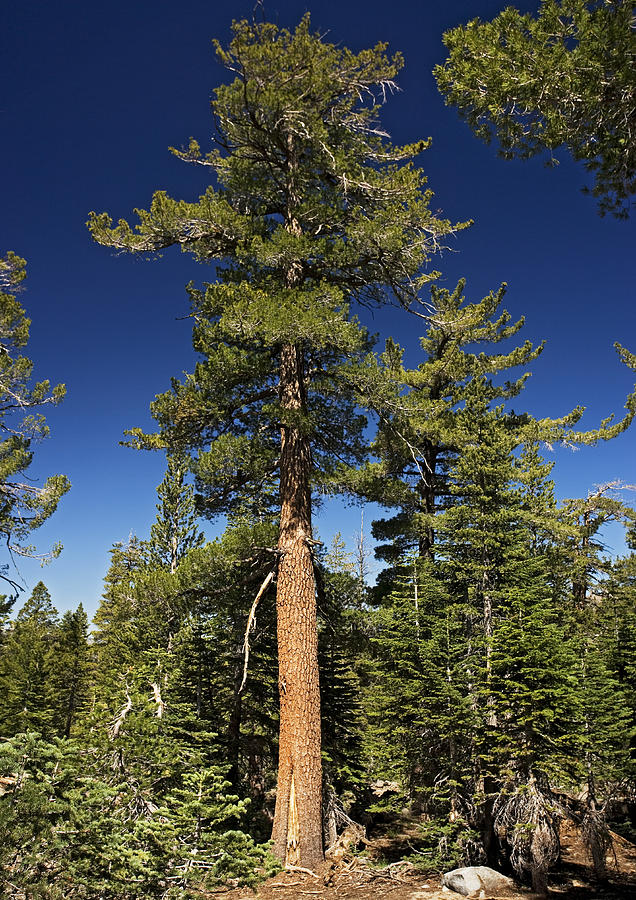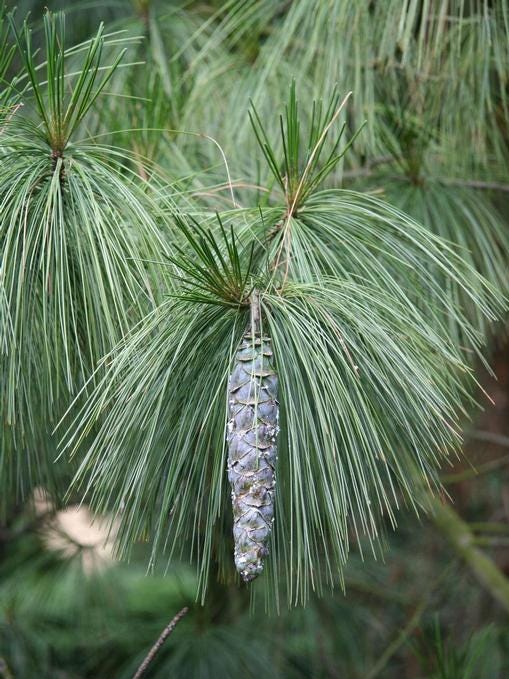

Unpruned pines, on average, peaked in net present value 52 years post-release. Retaining isolated white pine trees at final harvest of other conifers in the Acadian forest enhances growth response and can be financially lucrative, especially if forest managers reserve younger pines (under 12 inches diameter) with vigorous crowns. They assessed financial performance of released pines in unpruned and hypothetical pruned scenarios.

Researchers used computer modeling to forecast future tree growth and computerized sawmill simulation to estimate post-release standing tree values. They collected measurements on all trees from the ground and climbed 9 trees to obtain branch measurements. NSRC researchers examined growth response of 77 isolated, released pines and determined their financial maturity at 8 sites throughout Maine’s Acadian spruce-fir region. Many spruce budworm era (1975-90) salvage harvests in the Northern Forest retained immature white pine reserve trees.
White pine tree manual#
In old field monocultures, value depends on early manual pruning, but in mixed-species stands, competition from shade tolerant conifers (spruce, fire, hemlock) can accelerate branch shedding and minimize weevil attack, creating high quality logs without manual pruning. Most woods grown pines are not of high value because of poor natural branch shedding and white pine weevil deformation. You can even make flour from the bark.Eastern white pine is potentially a high-value species because of large market premiums for clear lumber, so financial return for harvesting white pine depends on forest management designed to develop high quality basal logs. Peel the nuts out of the pine cone for a crunchy snack high in fat and protein. New shoots can be peeled and candied, and the sap is naturally antibacterial. Its needles are high in vitamin C, so they’re often steeped like tea. The United States lumber industry was founded on this special tree, which is prized for its lightness, workability, straightness and the fact that it shrinks and swells very little. The parts of the Eastern White Pine tree have many uses, starting, of course, with lumber. They gradually taper, and their scales aren’t sharp and prickly. The pine cones are longer and thinner than those of other pines that grow in this region. The bark on a young Eastern White Pine tree looks smooth and greenish-gray, while mature trees begin to develop a reddish brown tone and layers of scales forming ridges that are broken into irregular shapes. Count them and you’ll get an idea, looking for signs of lower branches that have been shaded out and fallen off over time. Want to determine the approximate age of an Eastern White Pine in the landscape? For each year the tree is alive, it grows a single whorl of branches from its trunk, just below the terminal bud at the very top.

White pines also lose all but the current year’s needles each year in fall. In contrast, Red Pine and Jack Pine needles come in bundles of two, and Pitch Pine in bundles of three. Touch them and they’ll be soft and flexible. Get in close and you’ll see that these long, thin needles grow five to a cluster, each one three to five inches long. In fact, many older Eastern White Pines are asymmetrical due to their exposure to the wind.įrom afar, the bluish-green needles on its horizontal, parallel branches often have a feathery appearance. Taller trees often have branches that reach above the forest canopy, the highest ones swept upward. Whether sprouting up in the wild or growing in commercial timberlands, the Eastern White Pine tree stands tall and proud with an extraordinarily long, straight trunk.
White pine tree how to#
But if you aren’t an Eastern White Pine aficionado, you might not know how to tell it apart from other pines. Buy in monthly payments with Affirm on orders over 50. White Pines are long-lived, fast-growing trees, and they are the perfect tree for windbreaks, buffer plantings, or privacy screens in large open areas. Here in Maine, it often grows up to 130 feet tall and four feet in diameter, and can be found virtually anywhere you look. The fine feathery needles, open canopy, and straight trunk get more picturesque as they age. It’s also a beloved Christmas tree and feature in the landscape. The noble Eastern White Pine ( Pinus strobus) is a historic tree, providing the basis for countless timber-frame structures and Colonial homes throughout New England and the world over the past few centuries. Phytosanitary Certificates (HT Certificates) for Softwood Lumber Exports.On-Demand Wood Packaging Inspection Service.On-Demand Lumber & Timbers Grading Program Given these rather flexible requirements, Eastern White Pine flourishes in a wide variety of wet to dry habitats, including mixed wood forests, lowland conifer.Virtual Tours – Residential & Commercial.


 0 kommentar(er)
0 kommentar(er)
